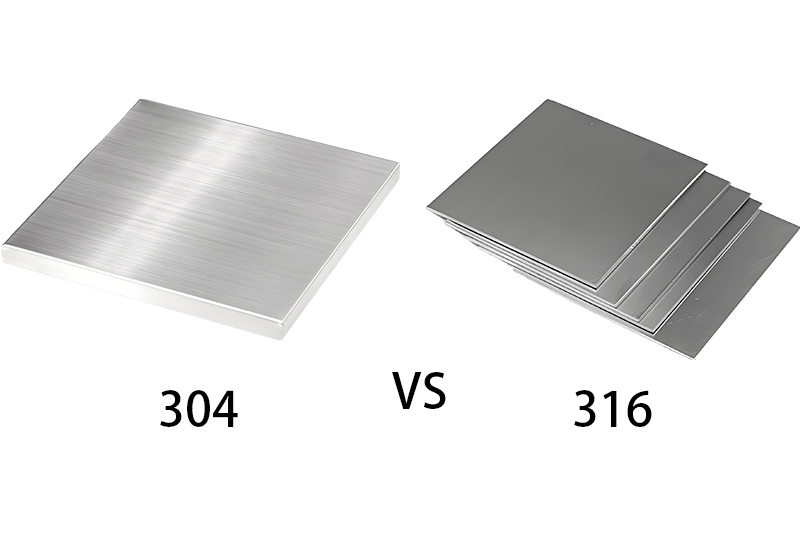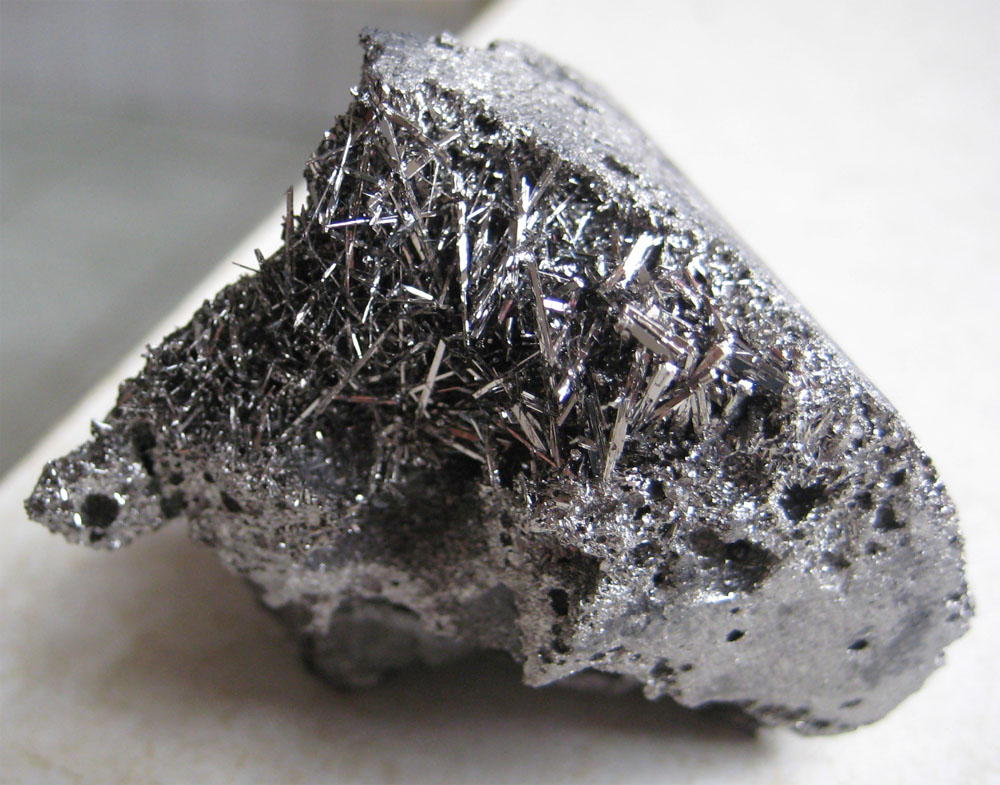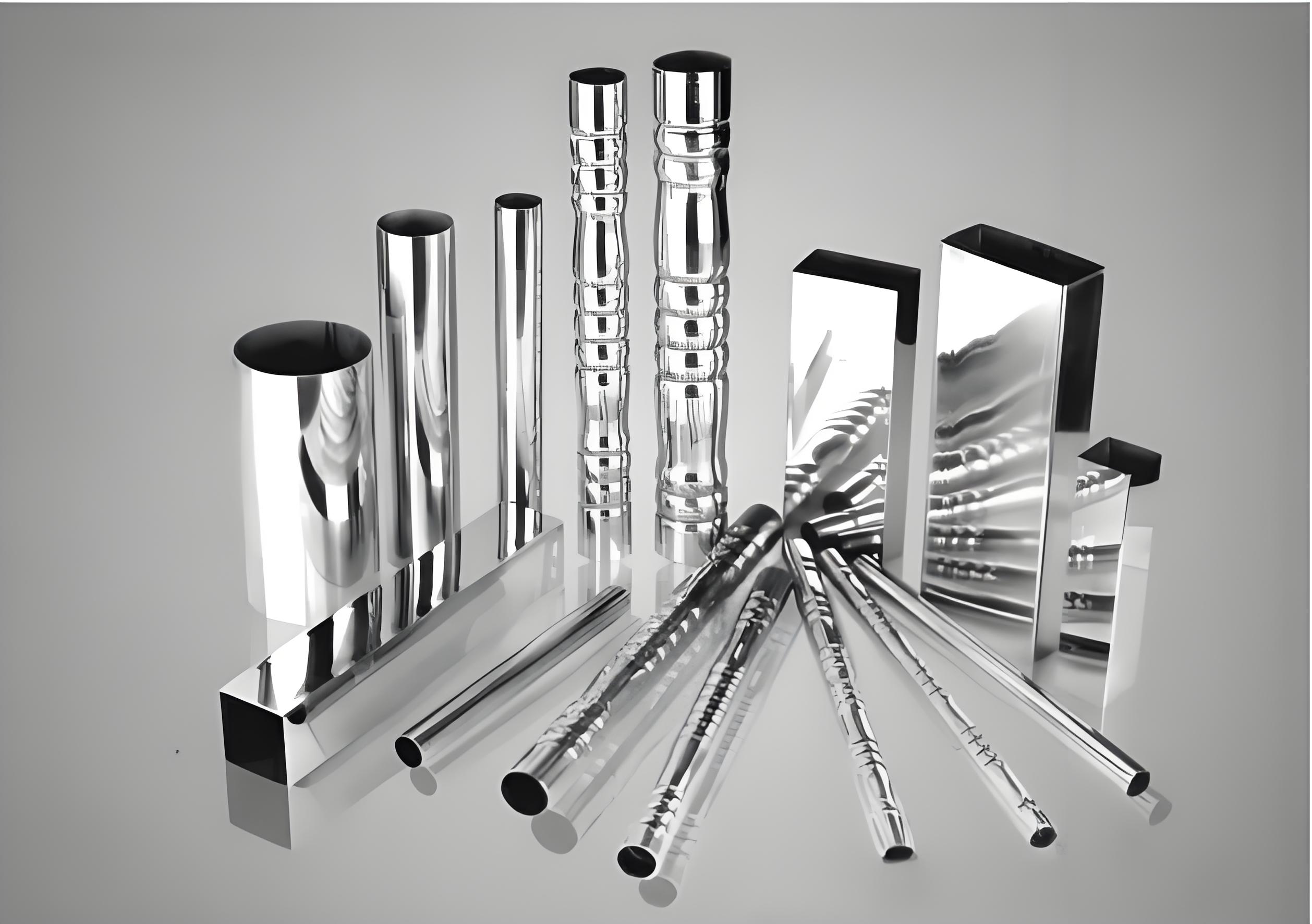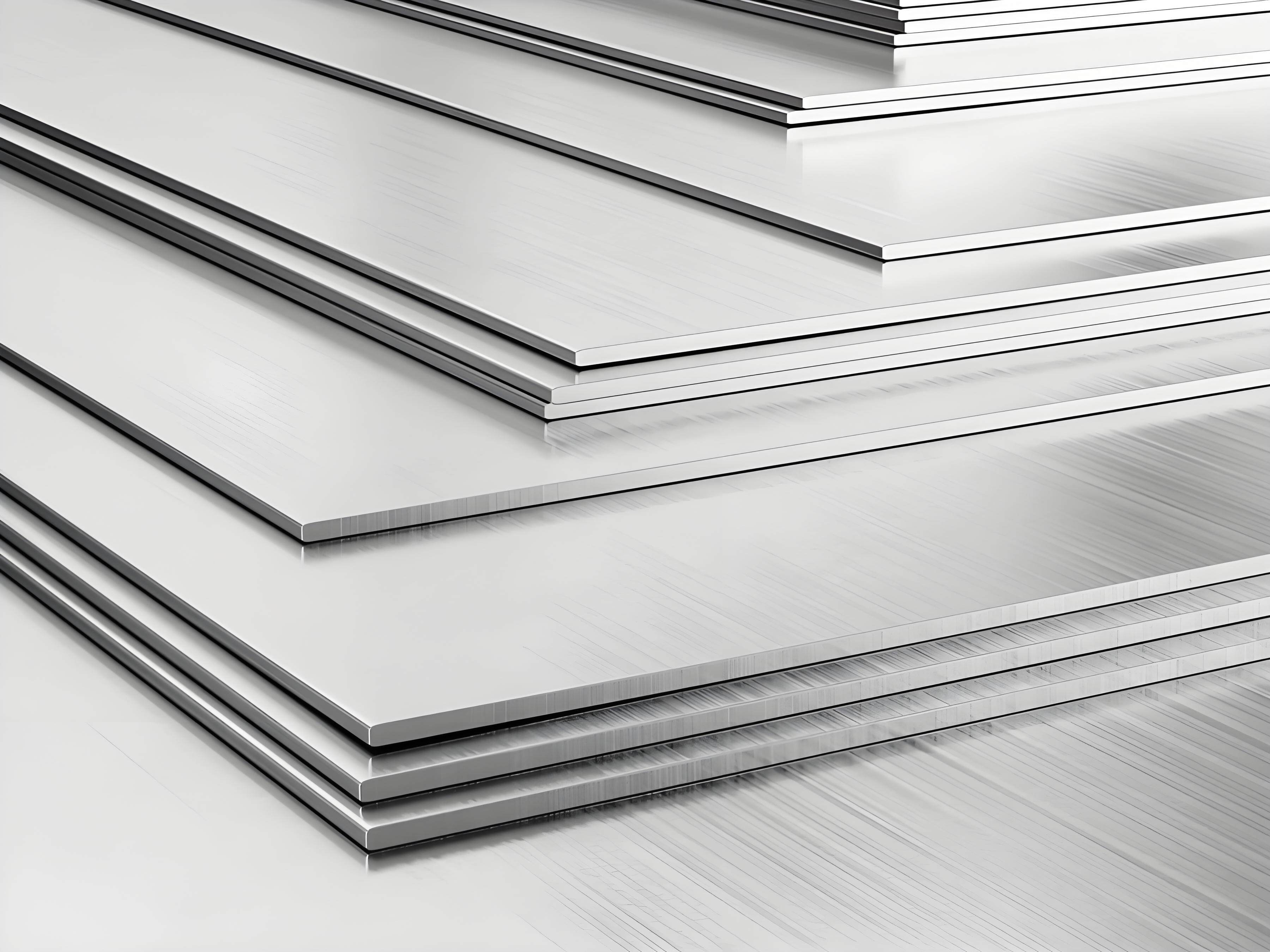Erreur de format d'e-mail
emailCannotEmpty
emailDoesExist
pwdLetterLimtTip
inconsistentPwd
pwdLetterLimtTip
inconsistentPwd


The most comprehensive guide to 304 SS and 316 SS: understanding the differences between them
Introduction
Stainless steel is a critical material in various industries, thanks to its strength, durability, and resistance to corrosion. Among the many types of stainless steel available, 304 stainless steel (304 SS) and 316 stainless steel (316 SS) are the most commonly used. These two types of stainless steel are versatile and offer excellent performance in numerous applications, but they are also distinct in their compositions and properties. This article explores the differences between 304 SS vs 316 SS, helping you understand their unique advantages and choose the right material for your needs.
What is Stainless Steel?
Definition and Key Characteristics
Stainless steel is an alloy primarily made from iron, chromium, and carbon. The presence of at least 10.5% chromium gives stainless steel its signature resistance to rust and corrosion. This is due to the formation of a passive oxide layer that protects the material from environmental damage.
The Role of Chromium in Stainless Steel
 Chromium
Chromium
Chromium is the element responsible for the "stainless" nature of the steel. It reacts with oxygen to create a thin, invisible oxide layer that shields the material from corrosion, thus making it an ideal choice for a wide range of environments where exposure to moisture or chemicals is common.
What is 304 Stainless Steel?
Composition of 304 Stainless Steel
304 stainless steel, often referred to as "18/8" stainless, contains 18% chromium and 8% nickel. These elements provide good corrosion resistance, excellent formability, and great mechanical properties, making 304 one of the most versatile types of stainless steel.
Common Applications of 304 Stainless Steel
304 SS is widely used in:
- Food Processing Equipment: Sinks, food containers, and refrigerators.
- Architectural Applications: Railings, decorative panels, and building facades.
- Household Items: Kitchen appliances, pots, pans, and cutlery.
What is 316 Stainless Steel?
Composition of 316 Stainless Steel
316 stainless steel is an austenitic alloy containing 16% chromium, 1014% nickel, and 23% molybdenum. The molybdenum addition significantly improves its resistance to corrosion, particularly in environments that are rich in chlorides, such as seawater.
The Significance of Molybdenum in 316 Stainless Steel
The molybdenum in 316 SS enhances its ability to resist pitting corrosion, which occurs in salty or acidic environments. This makes 316 SS a top choice for marine, chemical, and industrial applications, where superior corrosion resistance is essential.
Key Differences Between 304 and 316 Stainless Steel
STAINLESS STEEL |
||
PROPERTIES |
304 |
316 |
| Density | 8.00 g/cm3 | 8.00 g/cm3 |
| Melting point | 1450 °C | 1370°C-1450°C |
| Modulus of Elasticity | 193 GPa | 193 GPa |
| Electrical Resistivity | 0.72x10-6 Ω.m | 0.74 x10-6 0.m |
| Thermal Conductivity | 16.2 W/m.K | 16.3 W/m.K |
| Shear Modulus | 77.0 GPa | 74.0 GPa |
Corrosion Resistance
While both 304 SS and 316 SS are corrosionresistant, 316 stainless steel performs better in highly corrosive environments due to its molybdenum content. This makes it the preferred choice for applications that involve exposure to saltwater or harsh chemicals.
Cost Comparison
316 SS is more expensive than 304 SS due to the addition of molybdenum and the higher nickel content. The cost difference typically ranges from 2030%, depending on the application and market conditions.
Composition Comparison
Breakdown of 304 Stainless Steel Composition
Chromium: 1820%
Nickel: 810.5%
Carbon: Up to 0.08%
Manganese: Up to 2%
Breakdown of 316 Stainless Steel Composition
Chromium: 1618%
Nickel: 1014%
Molybdenum: 23%
Carbon: Up to 0.08%
Corrosion Resistance: 304 vs 316
How 304 Stainless Steel Handles Corrosion
304 SS is resistant to corrosion in many environments, making it ideal for everyday applications. However, in environments with higher chloride levels (e.g., near the ocean), 304 may develop some surface rust over time.
The Added Protection of 316 in Harsh Environments
316 SS offers superior corrosion resistance due to the molybdenum, particularly against pitting and crevice corrosion in chloriderich environments. It is more durable in chemical processing, marine, and acidic environments.
Strength and Durability
Mechanical Strength of 304 Stainless Steel
304 SS provides high tensile strength, good toughness, and excellent flexibility. It is suitable for applications that involve bending and forming without breaking.
Mechanical Strength of 316 Stainless Steel
316 SS offers similar mechanical strength but adds durability in harsher environments. It can withstand more extreme conditions without deteriorating, making it ideal for use in more demanding industrial and marine settings.
Heat Resistance
How 304 Stainless Steel Reacts to High Temperatures
304 SS can withstand temperatures up to 870°C (1600°F), making it suitable for applications that involve moderate heat exposure.
Heat Resistance in 316 Stainless Steel
316 SS can handle slightly higher temperatures than 304, maintaining its integrity in applications that involve both high heat and corrosive chemicals, making it a better option for industrial use.
Aesthetic and Practical Uses

Why 304 is Used for Aesthetic Purposes
Due to its clean and shiny appearance, 304 SS is often used in architectural and decorative applications, where aesthetics are crucial. It is easier to form and polish than 316, making it popular for visible surfaces.
When 316 is Preferred for Practical Applications
While 316 SS is not used as frequently for aesthetic purposes, it is the goto material for harsh industrial environments or where contact with chemicals and saltwater is frequent, such as in marine equipment and chemical processing.
Cost Considerations: Which Is More Expensive?
Price Factors for 304 Stainless Steel
304 SS is more affordable and widely available, making it an economical choice for generalpurpose applications. Its lower cost makes it suitable for largescale projects where cost is a major factor.
Why 316 Tends to Be More Expensive
The higher price of 316 SS is due to the molybdenum content and the additional manufacturing steps required to maintain its superior corrosion resistance. This makes it ideal for environments where longterm durability and resistance to harsh elements are necessary.
Applications of 304 Stainless Steel
Industries That Rely on 304 Stainless Steel
304 SS is found in:
Food and Beverage Industry: For processing and storage equipment.
Construction and Architecture: In metal framing and facades.
Consumer Goods: In household appliances and cookware.
Common Products Made From 304 Stainless Steel
Pipes and Tubes
Medical Equipment
Architectural Panels
Industrial Machinery Components
Applications of 316 Stainless Steel
Why 316 is Essential for Marine Environments
316 SS is highly resistant to saltwater, making it the first choice for:
Boat fittings
Marine fasteners
Shipbuilding
Industrial Uses of 316 Stainless Steel
Beyond marine applications, 316 SS is used in:
Pharmaceutical Manufacturing
Chemical Processing Plants
Heat Exchangers and Reactors
Which Stainless Steel Should You Choose?

Factors to Consider When Choosing Between 304 and 316
Your choice between 304 and 316 depends on factors like:
Environment: If exposure to saltwater or harsh chemicals is involved, go with 316 SS.
Budget: If cost is a primary concern and the environment is not too corrosive, 304 SS will likely meet your needs.
Practical Guidelines for Different Environments
Mild Indoor or Outdoor Use: 304 SS is usually sufficient.
ChlorideRich, Marine, or Chemical Environments: Opt for 316 SS to ensure longevity and performance.
Conclusion
In the comparison between 304 SS vs 316 SS, both types of stainless steel have their own set of strengths. 304 stainless steel is versatile, affordable, and widely used in general applications, while 316 stainless steel offers superior corrosion resistance, particularly in harsher environments. The decision between these two types should be based on the specific needs of your project, environmental conditions, and budget.
FAQs
1. Which is better for outdoor use, 304 or 316 stainless steel?
316 stainless steel is better for outdoor use in harsh environments due to its enhanced resistance to corrosion, especially in saltwater or acidic conditions.
2. Can 304 stainless steel rust?
304 stainless steel is resistant to rust, but it can develop surface rust in environments with high chloride exposure or if not properly maintained.
3. Why is 316 stainless steel preferred for marine environments?
The molybdenum content in 316 stainless steel significantly improves its resistance to saltwater corrosion, making it ideal for marine applications.
4. Is 316 stainless steel foodsafe?
Yes, both 304 and 316 stainless steel are foodsafe, but 316 is preferred in more demanding environments due to its better corrosion resistance.
5. How can you tell the difference between 304 and 316 stainless steel?
Visually, it is difficult to tell the difference. The main difference is in composition: 316 contains molybdenum, which improves corrosion resistance in harsh environments.
6. How can you tell the difference between 304 and 316 stainless steel?
Visually, it's almost impossible to differentiate between 304 and 316 stainless steel because both look very similar. However, the difference lies in their composition—specifically, 316 contains molybdenum. To precisely determine the type of stainless steel, a material test (such as Xray fluorescence spectrometry) is needed to identify the presence of molybdenum, which would confirm the steel as 316.
7. Can 304 and 316 stainless steel be welded easily?
Yes, both 304 and 316 stainless steel are highly weldable using conventional welding techniques. However, 316 may require more careful welding practices due to its higher carbon content to avoid corrosion at the welded joints, making postweld treatments like annealing advisable for the best results.
8. What is the lifespan of 304 and 316 stainless steel in different environments?
The lifespan of 304 and 316 stainless steel depends significantly on environmental factors. In mild indoor conditions, 304 stainless steel can last decades without noticeable corrosion. In more corrosive environments, like coastal or industrial settings, 316 stainless steel will last much longer due to its molybdenum content, which protects it from rust and pitting.
9. Does 316 stainless steel perform better than 304 in hightemperature conditions?
Yes, 316 stainless steel performs better at higher temperatures compared to 304 stainless steel. It is more resistant to oxidation and scaling at elevated temperatures, making it a better option for applications where heat resistance is critical.
10. Is 316 stainless steel more difficult to machine compared to 304?
Yes, 316 stainless steel is slightly more challenging to machine than 304 because of its higher nickel and molybdenum content. It requires more precise cutting tools and slower machining speeds to ensure smooth cutting without excessive wear on the tools. However, the difference is relatively minor and can be managed with proper machining techniques.
11. Are both 304 and 316 stainless steel foodgrade?
Yes, both 304 and 316 stainless steel are considered foodsafe and are commonly used in food processing and kitchen applications. However, 316 stainless steel is preferred in more demanding food environments, such as those involving acidic or salty substances, where enhanced corrosion resistance is necessary.
12. Are there any limitations to using 316 stainless steel?
While 316 stainless steel offers excellent corrosion resistance, it does come with a few limitations. Its higher cost compared to 304 stainless steel makes it less practical for budgetsensitive projects unless the enhanced corrosion resistance is necessary. Additionally, 316 can be more challenging to machine and requires specialized tools or techniques to work with efficiently.
13. Can 304 and 316 stainless steel be recycled?
Yes, both 304 and 316 stainless steel are highly recyclable materials. Stainless steel, in general, is one of the most recycled materials in the world, with recycling rates often exceeding 80%. This makes both 304 and 316 environmentally friendly choices, especially for industries aiming to reduce their carbon footprint.
14. Can you mix 304 and 316 stainless steel in the same application?
In some cases, 304 and 316 stainless steel can be mixed in applications without issues, especially in environments where corrosion isn’t a significant concern. However, in harsh environments, especially those involving exposure to chlorides or saltwater, mixing the two types of stainless steel could cause galvanic corrosion, where the more corrosionresistant 316 could cause accelerated corrosion in the 304 components.
15. Which is better for welding: 304 or 316 stainless steel?
Both 304 and 316 stainless steel are excellent for welding, though there are slight differences. 304 stainless steel is easier to weld, whereas 316 stainless steel may require additional precautions, like postweld treatments, to avoid intergranular corrosion. For applications that involve significant welding, it’s important to consider these factors to maintain the material’s durability and integrity.
16. Is 316 stainless steel magnetic?
Both 304 and 316 stainless steel are austenitic, which means they are generally nonmagnetic in their annealed condition. However, after cold working (such as bending or forming), both types can exhibit some magnetic properties, although 316 will be less magnetic compared to 304 due to its higher nickel content.
In conclusion, when choosing between 304 stainless steel and 316 stainless steel, it’s essential to evaluate the specific environmental and functional requirements of your project. If you're working in mild environments where cost efficiency is a priority, 304 stainless steel offers excellent performance. However, if you're dealing with highly corrosive conditions, such as marine or industrial settings, 316 stainless steel is the superior choice despite its higher cost. Each type serves its purpose well and plays a critical role in the vast world of stainless steel applications.
